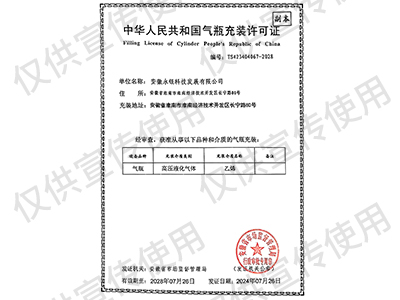Electronic-grade gas
![]()
The technical indicators of electronic grade tungsten hexafluoride (WF₆) are strictly classified according to application scenarios (such as semiconductor deposition, advanced processes). The core standards are as follows:
1. Purity level and applicable scenarios
|
grade |
Purity requirements (volume fraction) |
Applicable scenarios |
|
Basic electronic grade |
≥99.995%(≥4N5) |
Photovoltaic cells, LCD panels, semiconductor deposition technology above 28nm |
|
Super high-purity |
≥99.999%(≥5N) |
Advanced manufacturing processes below 14nm, 3DNAND memory chip manufacturing |
|
Cutting-edge |
≥99.9999%(≥6N) |
3nm/5nm extreme ultraviolet lithography (EUV), high-end interconnect layer deposition |
Market share: Level 5N accounts for 92.8% of global production capacity, and level 6N accounts for only 8% due to process difficulty.
2. Key impurity limits (taking level 5N as an example)
|
Impurity type |
Limit requirements |
The consequences of exceeding the standard |
|
Oxygen (O₂)+Nitrogen (N₂) |
≤10ppm |
The wafer surface oxidizes, and the film adhesion decreases |
|
Moisture (H₂O) |
≤5ppm (dew point ≤-60℃) |
Hydrolysis produces HF, corroding the deposition cavity |
|
Hydrogen fluoride (HF) |
≤20ppm |
Damage the silicon lattice structure and reduce device yield |
|
Total metal ions |
≤11pb(Fe/N/Whereflow |
Induces a circuit short circuit and increases leakage current |
|
Carbon tetrafluoride (CF₄) |
≤0.5ppm |
Reduce the CVD deposition rate |
|
Particulate matter (≥0.1μm) |
≤100 pieces/L |
Causes chip surface defects |
6N level special requirements:
PH₃/AsH₃ ≤0.05 ppb
Total hydrocarbon impurities ≤0.1 ppm
3. Packaging and storage and transportation specifications
Container requirements
316L stainless steel cylinder, electrolytic polishing and passivation treatment of inner wall.
The valve is made of nickel-based alloy and is equipped with a double blocking and leakage prevention device.
Filling standards
Filling pressure ≤0.09 MPa (40L cylinder charging capacity ≤50kg)
Filling coefficient ≤1.33 kg/L (refer to the analogy of sulfur hexafluoride)
Storage and transportation conditions
The storage temperature away from light is ≤25℃, and the humidity is ≤45%.
Shock prevention is required during transportation (bumping frequency ≤2.5 times/second).
UN number 2196, leakage concentration alarm threshold 0.5%.
4. Testing methods and standard basis
|
Testing items |
method |
Standard basis |
|
Purity and gas impurities |
Gas chromatography-mass spectrometry combined (GC-MS) |
GB/T 32386-2025 |
|
moisture |
Karl Fischer Coulomb method (accuracy ±0.1ppm) |
GB/T 5832.3 |
|
Metal ions |
ICP-MS (detection limit 0.1ppb) |
Semi c10 |
|
Particulate matter |
Laser dust particle counter (0.1–10μm) |
ISO1 4644-1 |
|
HF residue |
Ion chromatography (detection limit 0.03mg/L) |
GB/T 31995 |
Mandatory enforcement standards:
Purity and safety: GB/T 32386-2025 (replace 2015 version)
Environmental protection label: GB 13690-2009 "Public announcement of chemical hazards"
5. Apply risk control
CVD deposition process:
O₂ >10 ppm causes the resistivity of tungsten film to increase by 30%, and HF >20 ppm corrodes the vacuum pump oil.
3nm EUV lithography:
Metal ions >1 ppb cause line width deviation ≥5%, and particulate matter exceeds the standard and leads to mask contamination.
Leakage emergency:
Nonute with sodium carbonate immediately when exposed to water, and operators must wear fluoroelastic protective equipment.
A wafer factory failed to deposition of the entire batch of chips due to moisture exceeding the standard (8 ppm), and lost more than ten million US dollars.
- Previous:Nitrogen trifluoride
- Next:Hydrogen





